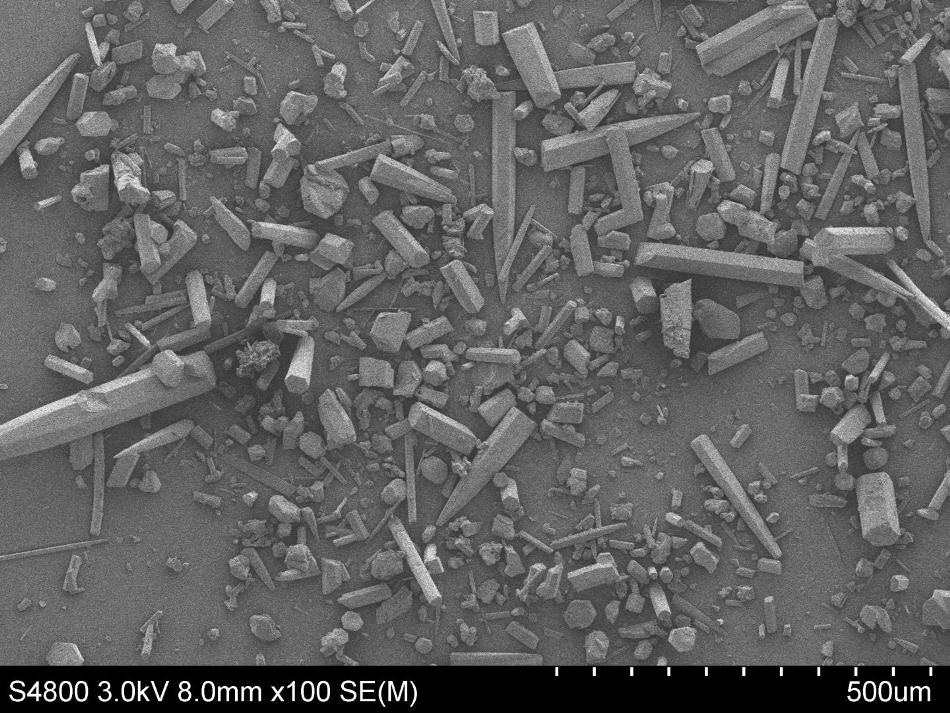Mar 23 2017
 These are crystals of one of the materials that was discovered using the new method, as seen by an electron microscope. This is a structure with a very high methane deliverable capacity, making it promising for natural-gas-powered vehicles. (CREDIT - University of Southampton)
These are crystals of one of the materials that was discovered using the new method, as seen by an electron microscope. This is a structure with a very high methane deliverable capacity, making it promising for natural-gas-powered vehicles. (CREDIT - University of Southampton)
Researchers at the University of Southampton partnered with colleagues at the University of Liverpool and developed a new technique, which is likely to transform the way scientists search for, design and create new materials.
The researchers used state-of-the-art computer modeling to map the way molecules assemble and crystallize to develop new materials - each molecule resulting in numerous possible structures, each with varying properties and probable applications.
This new technique could quicken the discovery of materials for vital applications in pollution control, energy, pharmaceuticals, and a multitude of other fields. Details of technique have been published in the Nature journal.
When an engineer builds a dam or an aeroplane, the structure is first designed using computers. This is extremely difficult at the size scale of molecules or atoms, which often assemble in non-intuitive ways. It is difficult to design at the atomic scale from scratch and the failure rate in new materials discovery is high. As chemists and physicists trying to discover new materials, we often feel like explorers without reliable maps.
Graeme Day, Professor of Chemical Modeling, University of Southampton
Professor Andrew Cooper, Director of the Materials Innovation Factory at the University of Liverpool, continues: "Each molecule has an associated energy surface, which you can think of as being like the map of a desert island. Some islands contain treasure in the form of useful new materials, but most don't. There is an almost limitless number of molecules that we could, in principle, make - this new method tells us which islands to search and what to look for."
Compared to engineers, chemists do not have the liberty to create any structure that they desire: they are restricted to discovering structures that match the optimized positions of atoms - known as local minima - on an extremely complex energy surface. This surface can only be totally represented in numerous dimensions, therefore cannot be simply conceptualized.
However, the UK team has integrated techniques that predict the way molecules will form crystal structures, with computer simulations that envisage the properties of these structures.
The result is fairly simple color-coded maps which can be employed, by researchers without a computational skill, to find the best materials for particular applications. For instance, a researcher attempting to form a highly porous material to store a specific gas might use the map to identify the finest molecules that enhance this property.
In the simulations emphasized in their research paper, the team applied this new technique to a series of known and theoretical molecules, which resulted in the discovery and synthesis of materials with large methane storage capabilities, which has implications for natural-gas-powered vehicles. The research also resulted in the first-time synthesis of the tiniest dense molecular crystal, revealing how computational techniques can be used to spot unparalleled properties.